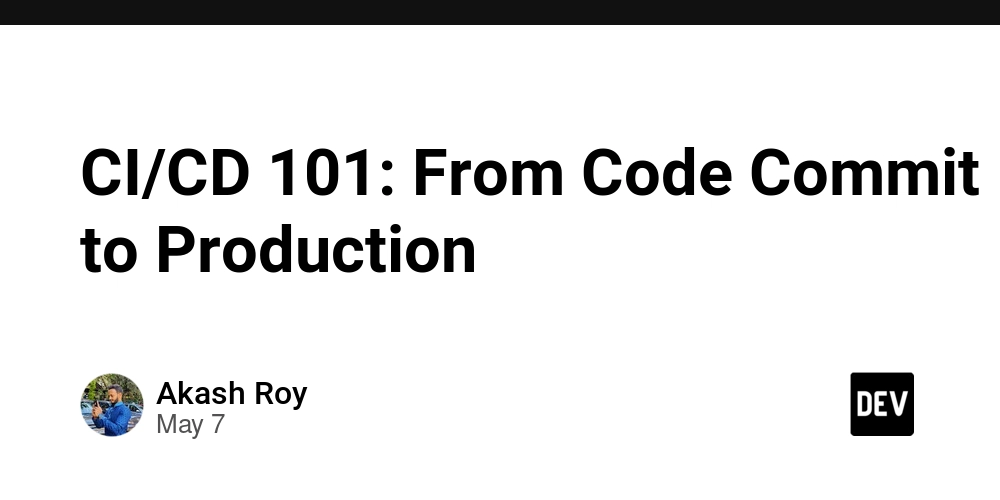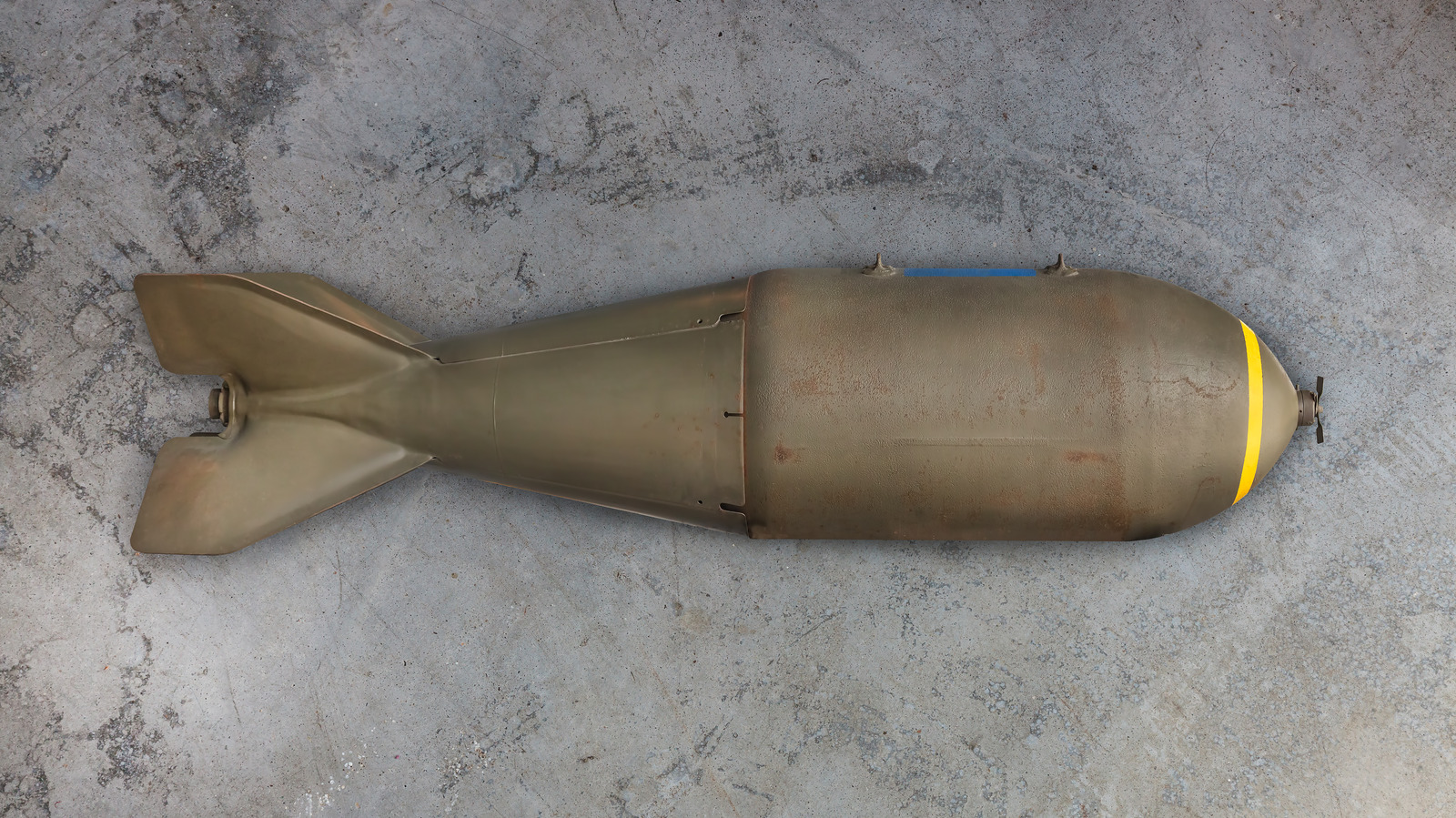CI/CD 101: From Code Commit to Production
In the world of modern software delivery, speed and reliability are everything. Users expect features to roll out fast — without downtime or drama. That’s where CI/CD comes in. In this blog, we’ll break down what CI/CD really is, how it powers DevOps, and walk through a real example so you can see it in action. What is CI/CD? CI/CD stands for: Continuous Integration (CI) – Automating the build and test process every time code is committed. Continuous Delivery (CD) – Automating the release of that tested code to staging or production. In simple terms: You commit code → It’s built and tested → If successful, it’s deployed automatically This approach avoids the nightmare of last-minute integration hell, ensures bugs are caught early, and allows teams to ship smaller, safer changes more frequently. Benefits of CI/CD Faster deployments: Shipping becomes routine, not a big event. Improved quality: Automated testing catches issues early. Shorter feedback loops: Stakeholders see progress faster. Reduced risk: Small, incremental changes are easier to roll back. Typical CI/CD Flow Here’s a high-level look at what happens in a CI/CD pipeline: Developer pushes code to a Git repository CI pipeline triggers: Runs tests Lints code Builds artifacts (e.g., a Docker image or compiled binary) If all steps pass, CD pipeline triggers: Deploys to staging environment Optionally runs automated integration tests Promotes to production Tools Involved in CI/CD Depending on your stack, you might use: Source Control: GitHub, Azure Repos, GitLab CI/CD Engines: Azure Pipelines, GitHub Actions, GitLab CI, Jenkins Artifacts: Azure Artifacts, GitHub Packages, JFrog Artifactory Environments: Azure App Service, AKS, App Center, etc. In our upcoming blogs, we’ll focus on Azure Pipelines and GitHub Actions. Example: CI/CD for a Node.js App Using Azure Pipelines Let’s say you have a simple Node.js app in a Git repo. You want every push to the main branch to: Install dependencies Run unit tests Build the app Deploy to Azure App Service (if all goes well) Here’s what a basic YAML pipeline could look like: trigger: branches: include: - main pool: vmImage: 'ubuntu-latest' steps: - task: NodeTool@0 inputs: versionSpec: '18.x' displayName: 'Use Node.js' - script: | npm install npm run test displayName: 'Install and Test' - script: npm run build displayName: 'Build Application' - task: AzureWebApp@1 inputs: azureSubscription: 'Your-Service-Connection-Name' appName: 'your-app-service-name' package: '$(System.DefaultWorkingDirectory)/**/*.zip' displayName: 'Deploy to Azure' This is a minimal setup. Real-world pipelines often include linting, code coverage checks, approval gates, infrastructure provisioning, and rollback mechanisms. Best Practices Keep builds fast — under 10 minutes ideally Fail fast: stop pipeline early if a key step fails Store pipeline definitions in code (YAML, not UI) Use secrets for credentials (never hardcode passwords or tokens) Protect production branches with approvals or checks What’s Next Now that you understand the value of CI/CD and how it works, we’re ready to build one ourselves. In the next blog, we’ll create your first Azure DevOps Project and link it to a Git repo. From there, we’ll configure a working pipeline for real deployment. Time to get hands-on.

In the world of modern software delivery, speed and reliability are everything. Users expect features to roll out fast — without downtime or drama. That’s where CI/CD comes in.
In this blog, we’ll break down what CI/CD really is, how it powers DevOps, and walk through a real example so you can see it in action.
What is CI/CD?
CI/CD stands for:
- Continuous Integration (CI) – Automating the build and test process every time code is committed.
- Continuous Delivery (CD) – Automating the release of that tested code to staging or production.
In simple terms:
You commit code → It’s built and tested → If successful, it’s deployed automatically
This approach avoids the nightmare of last-minute integration hell, ensures bugs are caught early, and allows teams to ship smaller, safer changes more frequently.
Benefits of CI/CD
- Faster deployments: Shipping becomes routine, not a big event.
- Improved quality: Automated testing catches issues early.
- Shorter feedback loops: Stakeholders see progress faster.
- Reduced risk: Small, incremental changes are easier to roll back.
Typical CI/CD Flow
Here’s a high-level look at what happens in a CI/CD pipeline:
- Developer pushes code to a Git repository
- CI pipeline triggers:
- Runs tests
- Lints code
-
Builds artifacts (e.g., a Docker image or compiled binary)
- If all steps pass, CD pipeline triggers:
Deploys to staging environment
Optionally runs automated integration tests
Promotes to production
Tools Involved in CI/CD
Depending on your stack, you might use:
- Source Control: GitHub, Azure Repos, GitLab
- CI/CD Engines: Azure Pipelines, GitHub Actions, GitLab CI, Jenkins
- Artifacts: Azure Artifacts, GitHub Packages, JFrog Artifactory
- Environments: Azure App Service, AKS, App Center, etc.
In our upcoming blogs, we’ll focus on Azure Pipelines and GitHub Actions.
Example: CI/CD for a Node.js App Using Azure Pipelines
Let’s say you have a simple Node.js app in a Git repo. You want every push to the main branch to:
- Install dependencies
- Run unit tests
- Build the app
- Deploy to Azure App Service (if all goes well)
Here’s what a basic YAML pipeline could look like:
trigger:
branches:
include:
- main
pool:
vmImage: 'ubuntu-latest'
steps:
- task: NodeTool@0
inputs:
versionSpec: '18.x'
displayName: 'Use Node.js'
- script: |
npm install
npm run test
displayName: 'Install and Test'
- script: npm run build
displayName: 'Build Application'
- task: AzureWebApp@1
inputs:
azureSubscription: 'Your-Service-Connection-Name'
appName: 'your-app-service-name'
package: '$(System.DefaultWorkingDirectory)/**/*.zip'
displayName: 'Deploy to Azure'
This is a minimal setup. Real-world pipelines often include linting, code coverage checks, approval gates, infrastructure provisioning, and rollback mechanisms.
Best Practices
- Keep builds fast — under 10 minutes ideally
- Fail fast: stop pipeline early if a key step fails
- Store pipeline definitions in code (YAML, not UI)
- Use secrets for credentials (never hardcode passwords or tokens)
- Protect production branches with approvals or checks
What’s Next
Now that you understand the value of CI/CD and how it works, we’re ready to build one ourselves.
In the next blog, we’ll create your first Azure DevOps Project and link it to a Git repo. From there, we’ll configure a working pipeline for real deployment.
Time to get hands-on.








































































































































































![[The AI Show Episode 146]: Rise of “AI-First” Companies, AI Job Disruption, GPT-4o Update Gets Rolled Back, How Big Consulting Firms Use AI, and Meta AI App](https://www.marketingaiinstitute.com/hubfs/ep%20146%20cover.png)


























































































































![[DEALS] The Premium Python Programming PCEP Certification Prep Bundle (67% off) & Other Deals Up To 98% Off – Offers End Soon!](https://www.javacodegeeks.com/wp-content/uploads/2012/12/jcg-logo.jpg)














































































































-Mafia-The-Old-Country---The-Initiation-Trailer-00-00-54.png?width=1920&height=1920&fit=bounds&quality=70&format=jpg&auto=webp#)
-Nintendo-Switch-2---Reveal-Trailer-00-01-52.png?width=1920&height=1920&fit=bounds&quality=70&format=jpg&auto=webp#)























_Sergey_Tarasov_Alamy.jpg?width=1280&auto=webp&quality=80&disable=upscale#)





























































































![Instacart’s new Fizz alcohol delivery app is aimed at Gen Z [U]](https://i0.wp.com/9to5mac.com/wp-content/uploads/sites/6/2025/05/Instacarts-new-Fizz-alcohol-delivery-app-is-aimed-at-Gen-Z.jpg?resize=1200%2C628&quality=82&strip=all&ssl=1)




















![Beats Studio Pro Wireless Headphones Now Just $169.95 - Save 51%! [Deal]](https://www.iclarified.com/images/news/97258/97258/97258-640.jpg)































































































